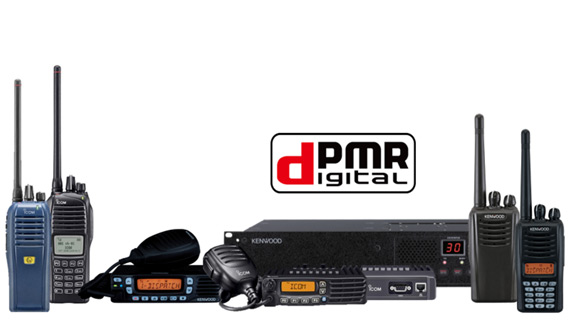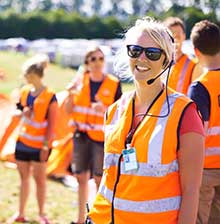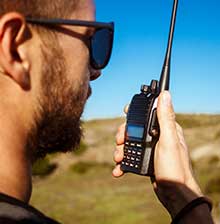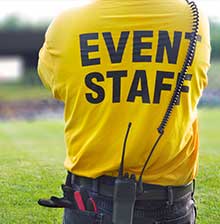Hospitality
Mode 1 meets the challenge of connecting your staff with their departments across larger sites; keeping your business responsive to visitors.
dPMR Mode 1 forms the basis for all forms of licenced PMR use and is part of the ETSI standard TS102 658.
dPMR Mode 1 offers the benefits of FDMA 6.25 kHz narrowband spectral efficiency in licensed operations for peer-to-peer communication in voice and data where repeaters and infrastructure are not a requirement.
Unlike the TDMA (Time Division Multiple Access) method which divides a 12.5kHz channel into two alternating 30msec timeslots to achieve 6.25kHz equivalence, the FDMA (Frequency Division Access) method employed by dPMR divides the same 12.5kHz channel in length, creating two identical 6.25kHz channels, allowing users to effectively double the capacity of their usable spectrum without the need for a repeater to synchronise time slots. This is especially important in ensuring the availability of communication in critical situations when there is increased demand on an allocated radio spectrum. Both channel access methods offer distinct features and benefits and the choice between the two should ultimately be made based on its suitability for the end use application.

In simple terms. dPMR Mode 1 can be considered as an advanced version of dPMR446 as it offers higher powered equipment in both hand-portable (1 – 5 watts RF output) and mobile formats (5 – 25 watts RF output) which in turn, deliver significantly increased coverage over license-free dPMR 446 (0.5 watts RF output). dPMR Mode 1 provides an easily implemented two-way radio communication system for applications where local area coverage is required. Base station (non-repeater type) radios can be employed and interconnected to IT networks via IP to exploit both text messaging and voice calls using the voice and data functionality of dPMR. In addition to offering voice and data capabilities, dPMR446 Mode 1 also supports combined voice + data, making it is possible to embed data into a voice call or automatically append it at the end of a call. With the removal of the limitations of PMR 446 licence-free operation, dPMR Mode 1 can offer more advanced features and user safety functions including GPS, priority, emergency and call break-in.


dPMR is an ‘open standard’ which promotes choice by encouraging competing manufacturers to development equipment meeting with dPMR ETSI standards. As with all dPMR Modes, equipment complying with dPMR Mode 1 is backward compatible with legacy analogue equipment and can operate in both FM analogue and dPMR digital modes giving users a logical and cost effective pathway in the migration from analogue systems to the benefits of digital two way radio technology.
Current equipment complying with ETSI standard TS102 658 for operation in dPMR Mode 1 includes hand-portables, mobiles, base stations, modems and repeaters and hand-portable radios meeting with IEC Ex/ATEX based IS/ specifications for use in explosive atmospheres in the oil, mining and chemical industries.

Mode 1 meets the challenge of connecting your staff with their departments across larger sites; keeping your business responsive to visitors.

Operating behind the scenes to keep a site operating at its best is a challenge that Mode 1 can meet; connecting management, staff and control room.

dPMR Mode 1 enables you to offer seamless support to visitors to theme or nature parks, zoos or visitor attractions.

From the security gate and processing to personnel safety Mode 1 can help your production and management teams compete, whatever your market.

Whatever the weather your operations need a reliable system across the whole sites; connect your team with Mode 1 to meet your requirements.

Mode 1 can enable you to manage carnivals, festivals or outdoor events, meeting health and safety requirements and delivering a first rate service.
Membership info or technical data and all else in between; we're happy to answer your queries ...
The dPMR Association was established in 2007 and provides a forum for interested parties to contribute their expertise.
Get the latest updates